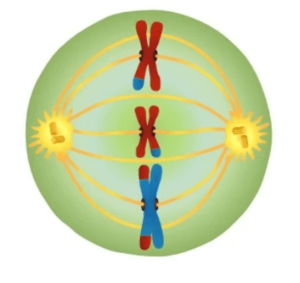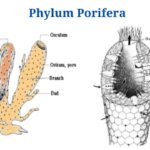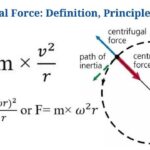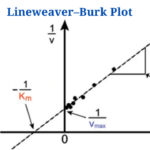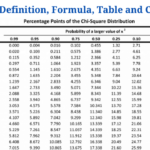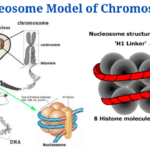Metaphase Definition
Metaphase is a cell cycle stage that occurs during both mitosis and meiosis cell division. The chromosomes condense during metaphase in mitosis and meiosis, and they become visible and identifiable during alignment at the centre of the dividing cell, forming a metaphase plate at the cell’s centre.
A set of checkpoints ensure that the spindles are produced during this period. The metaphase stage is utilised to detect chromosomal abnormalities in karyotyping experiments.
What Happens in Metaphase?
- Metaphase is the process of separating the duplicated genetic material carried in the parent cells’ nuclei into two identical daughter cells.
- In metaphase, the chromosomes are aligned at the centre of the cell by pulling and pushing, a process that some refer to as a cellular tug of war.
- Sister chromatids are formed when replicated chromosomes are linked at the centromere.
- Before metaphase, the prophase stage generated radial microtubules around the centrosome called kinetochores.
- Long protein filament microtubules (kinetochore microtubules) connect the kinetochores to the poles on either end of the cell.
- The sister chromatids are tugged back and forth by the kinetochore tubules until they are aligned at the cell’s equator.
- An equatorial plane is formed as a result of this. In addition, during metaphase, a metaphase checkpoint occurs.
- The metaphase checkpoint, also known as the spindle assembly checkpoint, guarantees that the cell is ready to split by inspecting chromosome alignment and kinetochores attachment.
- Despite the changes in chromosomal alignment between mitosis and meiosis, the spindle assembly checkpoint must occur during metaphase in both types of cell cycles.
- The cell enters the fourth phase of mitosis, known as anaphase, when these steps are completed correctly.
What is PhD : Meaning, How to Do, Benefits, Full Details
Metaphase of Mitosis
- Metaphase is a phase of the cell division cycle that occurs after the chromosomes have condensed during prophase.
- The condensation process is necessary to ensure that the chromosomes (chromatids) are not destroyed during the metaphase pulling and pushing pressures.
- The chromosomes are randomly positioned within the cell nucleus, within a disintegrated nuclear membrane, at the conclusion of prophase or prometaphase.
Metaphase of Mitosis. Image Source: Wikipedia
- The polar and radial microtubules, on the other hand, are related to each of the chromosomes.
- Microtubules from each centrosome connect to each chromosome, which is made up of two identical sister chromatids, during mitosis. Cohesins are proteins that link the sister chromatids.
- The presence of microtubules permits the cell to be a dynamic entity by allowing pulling and pushing forces to be applied.
- The kinetochore microtubules facilitate this by allowing the sister chromatids to align at the cell’s centre, generating a metaphase plate.
- Tubulin, a subunit of these microtubules, is constantly added and withdrawn from the microtubules’ ends.
- The microtubules and sister chromatids move in a treadmilling motion as a result of this.
- The chromatid alignment along the metaphase plate guarantees that the new cells generated will be similar.
- For the spindle assembly checkpoint to occur, the chromatids must be connected to the microtubules from both poles of the cell and aligned at the metaphase plate.
- The checkpoint prolongs metaphase, which can take days to guarantee that the chromosomes are aligned properly.
- After the checkpoint, the chromosomes release a signal that activates the anaphase-promoting complex, causing metaphase to finish and anaphase to begin.
Metaphase of Meiosis
Metaphase I in Meiosis
- The cells engaged in meiosis I are comparable in that a diploid cell splits into haploid cells (half of the chromosomes).
- It operates by producing genetic variety in the daughter cells of the following generation of parent cells through chromosomal crossing over genes.
- Because DNA replication occurs before meiosis, sister chromatids are formed, and the process of meiosis I begins with a homologous pair of each chromosome.
- The homologous pair is a depiction of the same DNA, but the alleles are different.
- During metaphase I, the homologous pairs will attach to each other and align on the metaphase plate, unlike in mitosis, when the sister chromatids are the ones who align on the metaphase plate.
- A spindle checkpoint, also known as the meiotic spindle checkpoint, occurs during this period.
- Before moving on to the following phase, anaphase I, this checkpoint ensures that the homologous pairs and each pair are linked to the kinetochore microtubules from each side of the cell.
- Successful completion of the metaphase I make sure that during meiosis, I create two cells, each with two copies of half of a complete genome.
Click Here for Complete Biology Notes
Figure: Metaphase 1 in Meiosis. Image Source: Wikipedia
Metaphase II in Meiosis
- Meiosis II is now in its second phase.
- This is the phase in which the meiotic spindles of the two daughter cells formed during the initial meiotic division begin to pull the chromosomes back to the metaphase plate.
- This is to get the centrosome ready for the next step of division.
- It occurs after a brief pause known as interkinesis.
- This causes the cells to begin dividing again, but without any DNA replication. As a result, each cell will have two copies of each gene’s allele.
- In addition, once metaphase II begins, the nuclear envelope begins to break down.
- The two kinetochores of each centromere, on the other hand, will bind to the spindle fibres from opposing poles at this point.
- The sister chromatids of each chromosome are then separated in the next phase.
- During the separation of the chromatids, a meiotic spindle checkpoint occurs, allowing for a quick transition to the next phase.
Figure: Metaphase 2 in Meiosis. Image Source: Wikipedia
Applications of Metaphase
- Genetic abnormalities can be discovered by karyotyping during the metaphase stage of cell cycle.
- This is because during this phase, cross-overs (meiosis) occur, and the pulling and pushing of the chromatids by the kinetochore microtubules may induce chromosome damage if the mitotic spindle checkpoint and the meiotic spindle checkpoint are missed.
Metaphase in Mitosis and Meiosis Citations
- https://www.britannica.com/science/metaphase
- https://www.sciencedirect.com/topics/biochemistry-genetics-and-molecular-biology/metaphase
- https://www.genome.gov/genetics-glossary/Metaphase
- https://www.nature.com/scitable/definition/metaphase-249/
- https://www.nature.com/scitable/topicpage/mitosis-and-cell-division-205/
- http://www.phschool.com/science/biology_place/biocoach/meiosis/metai.html#:~:text=The%20centrioles%20are%20at%20opposite,poles%20called%20the%20metaphase%20plate.
- https://www.sciencedirect.com/science/article/abs/pii/S0074769601120073
Related Posts
- Phylum Porifera: Classification, Characteristics, Examples
- Dissecting Microscope (Stereo Microscope) Definition, Principle, Uses, Parts
- Epithelial Tissue Vs Connective Tissue: Definition, 16+ Differences, Examples
- 29+ Differences Between Arteries and Veins
- 31+ Differences Between DNA and RNA (DNA vs RNA)
- Eukaryotic Cells: Definition, Parts, Structure, Examples
- Centrifugal Force: Definition, Principle, Formula, Examples
- Asexual Vs Sexual Reproduction: Overview, 18+ Differences, Examples
- Glandular Epithelium: Location, Structure, Functions, Examples
- 25+ Differences between Invertebrates and Vertebrates
- Lineweaver–Burk Plot
- Cilia and Flagella: Definition, Structure, Functions and Diagram
- P-value: Definition, Formula, Table and Calculation
- Nucleosome Model of Chromosome
- Northern Blot: Overview, Principle, Procedure and Results




